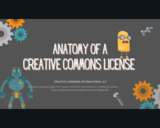
A brief overview of the six Creative Commons licenses and how each works.
- Subject:
- Applied Science
- Information Science
- Material Type:
- Module
- Reading
- Author:
- Tess Beebe Olten
- Date Added:
- 08/16/2021

A brief overview of the six Creative Commons licenses and how each works.
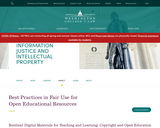
As educators begin to develop OER, one component of that process is navigating concerns around copyright when finding digital teaching materials. This webinar series addresses that and is divided into two tracks: K-12 and Higher Education. There are also two stand-alone webinar options that can be attended by both the K-12 and Higher Education community. All of the webinars will also be available on YouTube and linked to this page after the live event has ended.
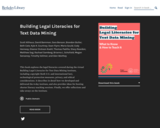
For those learning about fair use, this is a specific example of how fair use may be used in research for text data mining. The book also explores basic copyright and fair use more generally, as well as the specifics of text data mining.
From the "about" section of the book:
"This book explores the legal literacies covered during the virtual Building Legal Literacies for Text Data Mining Institute, including copyright (both U.S. and international law), technological protection measures, privacy, and ethical considerations. It describes in detail how we developed and delivered the 4-day institute, and also provides ideas for hosting shorter literacy teaching sessions. Finally, we offer reflections and take-aways on the Institute."
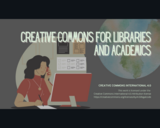
This module takes a look at the advantages of OER and the Creative Commons for both instructors and their learners. Both instructors and learners can enjoy using OER as well as creating it for use by others!
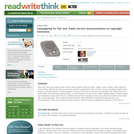
Students explore a range of resources on fair use and copyright then design their own audio public service announcements & PSA to be broadcast over the school's public address system.
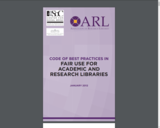
This is a code of best practices in fair use devised specifically by and for the academic
and research library community. It enhances the ability of librarians to rely on fair
use by documenting the considered views of the library community about best
practices in fair use, drawn from the actual practices and experience of the library
community itself.

This Code is a tool for educators, librarians, and authors to evaluate common
professional scenarios in which fair use can enable them to incorporate inserts,
including those protected by copyright, to create OER. It can provide groups
working on OER projects with a shared framework for evaluating and understanding
when and how to incorporate existing content to meet pedagogical needs

This course is for educators and learners who wants to understand how copyright affects use of learning materials, and how to use copyright to facilitate education. The course is focused on developing practical solutions. The reading won't always give these to you, its up to you to devise practical solutions based on the reading.

The Copyright Crash Course was created by Georgia Harper and is currently maintained by UT Libraries. The Course is arranged into several sections that allow users to explore certain areas of copyright law individually or as a group. The Course was originally created with faculty in mind, but can be used by anyone who is interested in understanding and managing their copyrights.
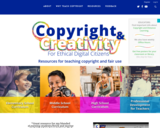
These materials aim to provide accessible and practical information about copyright – its protections, its limitations, and its role in encouraging creativity. Rather than just emphasizing what copyright prohibits, the goal here is to offer useful and positive information about what copyright allows and how students can successfully navigate and rely on copyright in their own roles as creators.
It is important to note that these materials focus on copyright in the United States. Other countries have similar frameworks, but their rules may differ on certain concepts such as fair use.
Lessons for students in grades K-12 are provided in pdf and google slide format.
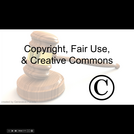
This lesson was created to introduce learners to Copyright law, the Fair Use Doctrine, and the Creative Commons.
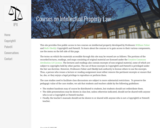
The Copyright X Course is taught by professors at Harvard University and is available synchronously to a limited number of librarians each year. However, the entire course content is available online and is openly licensed. This is a more traditional course on copyright and includes topics that would largely be discussed in a law classroom, such as theories underlying copyright law, cultural theory as it applies to copyright, and secondary liability for copyright. The course also covers many traditional areas of copyright, though, including basic foundations of copyright law, the different rights included with copyright (such as the right to reproduction, distribution and performance), and, of course, fair use. Included in the course are video lectures and lecture slides.
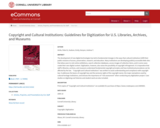
This is a full length monograph aimed at helping libraries, archives, and museums navigate copyright law involving digitization. In the course of the book, though, the authors helpfully unpack many areas of copyright law including Section 108 of the Copyright Act, Fair Use, Licensing, and Risk Management. It is a great primer on copyright law and includes many helpful key points, flowcharts and timelines.

Performance Objectives: Understand the basics of copyright and fair use in relation to open educationImplement the Creative Commons Licenses Copyright. We know what it is. And that it is complicated. The digital world has drastically changed how we access, use and interact with copyrighted content.

Performance Objectives: Understand the basics of copyright and fair use in relation to open educationImplement the Creative Commons Licenses Copyright. We know what it is. And that it is complicated. The digital world has drastically changed how we access, use and interact with copyrighted content.

This curriculum, developed as the final project for the Creative Commons for Academic Librarians Certificate course, is designed for students in introductory Library and Information Science courses. The unit offers a broad overview of fundamental concepts in copyright, fair use, and open licensing. The materials include readings, multimedia resources, discussion questions, and practical assignments. The curriculum addresses real-world challenges faced by librarians, explores the nuances of open licenses, and guides students through hands-on activities, fostering a deeper understanding of copyright issues in the digital age.
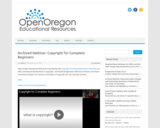
This webinar complete with slides, a video, and an extra resources/Q&A briefing at the end is a wonderful place to start if you've never studied copyright before. It could accompany some basic copyright readings, or be used as a copyright primer on its own. It is geared towards a library science audience and is a straightforward introduction to copyright formation, fair use, basic licensing, and Creative Commons licensing.
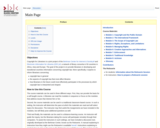
This open education online course is designed for librarians to gain a basic understanding in copyright, international copyright issues, licensing, and it even contains a module on traditional knowledge and activism.
The modules on activism and traditional knowledge make this resource a bit unique and useful as an add-on to any "traditional" copyright training modules.

The AASL Standards Framework for Learners includes the shared foundation of Engage. This standard guides students to the ethical use of information, including things created by others as well as by the students themselves. Students will explore background on copyright and fair use, understand creative commons and how to use it, as well as discover public domain resources. Lesson Outcomes for Students: Define copyright and fair use; Identify and understand Creative Commons licenses; Apply a Creative Commons license to a product; Search for Creative Commons and public domain materials on the web; Properly attribute Creative Commons and public domain materials. Cover Image Attribution: Pixabay, CC0
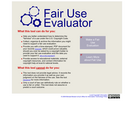
What this tool can do for you: 1). Help you better understand how to determine the "fairness" of a use under the U.S. Copyright Code. 2). Collect, organize & archive the information you might need to support a fair use evaluation. 3). Provide you with a time-stamped, PDF document for your records [example], which could prove valuable, should you ever be asked by a copyright holder to provide your fair use evaluation and the data you used to support it. 4). Provide access to educational materials, external copyright resources, and contact information for copyright help at local & national levels.